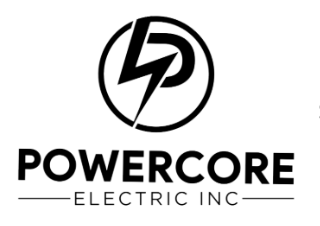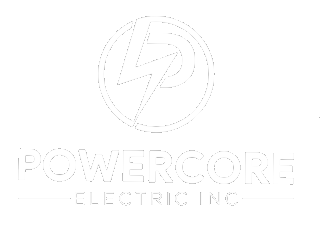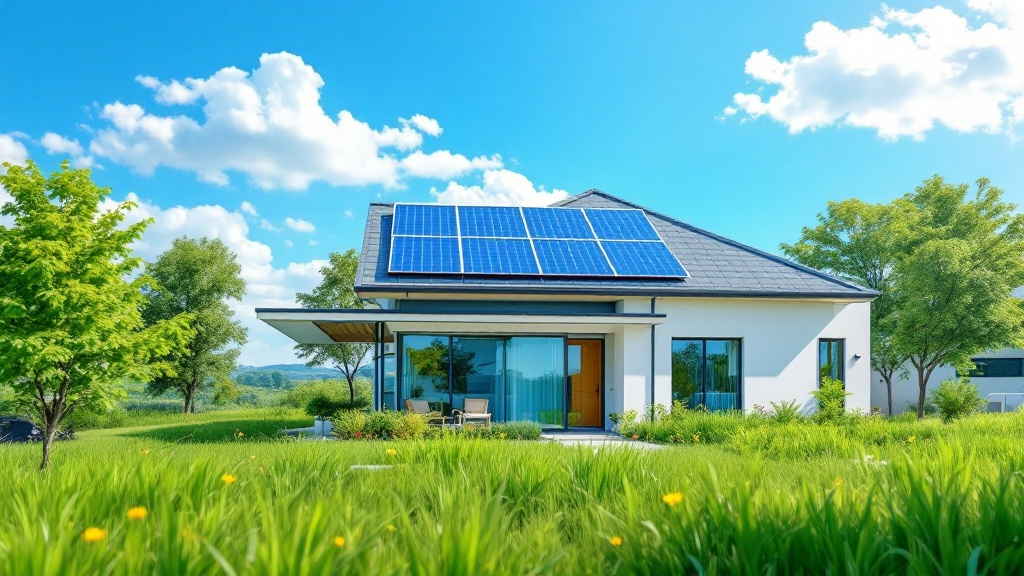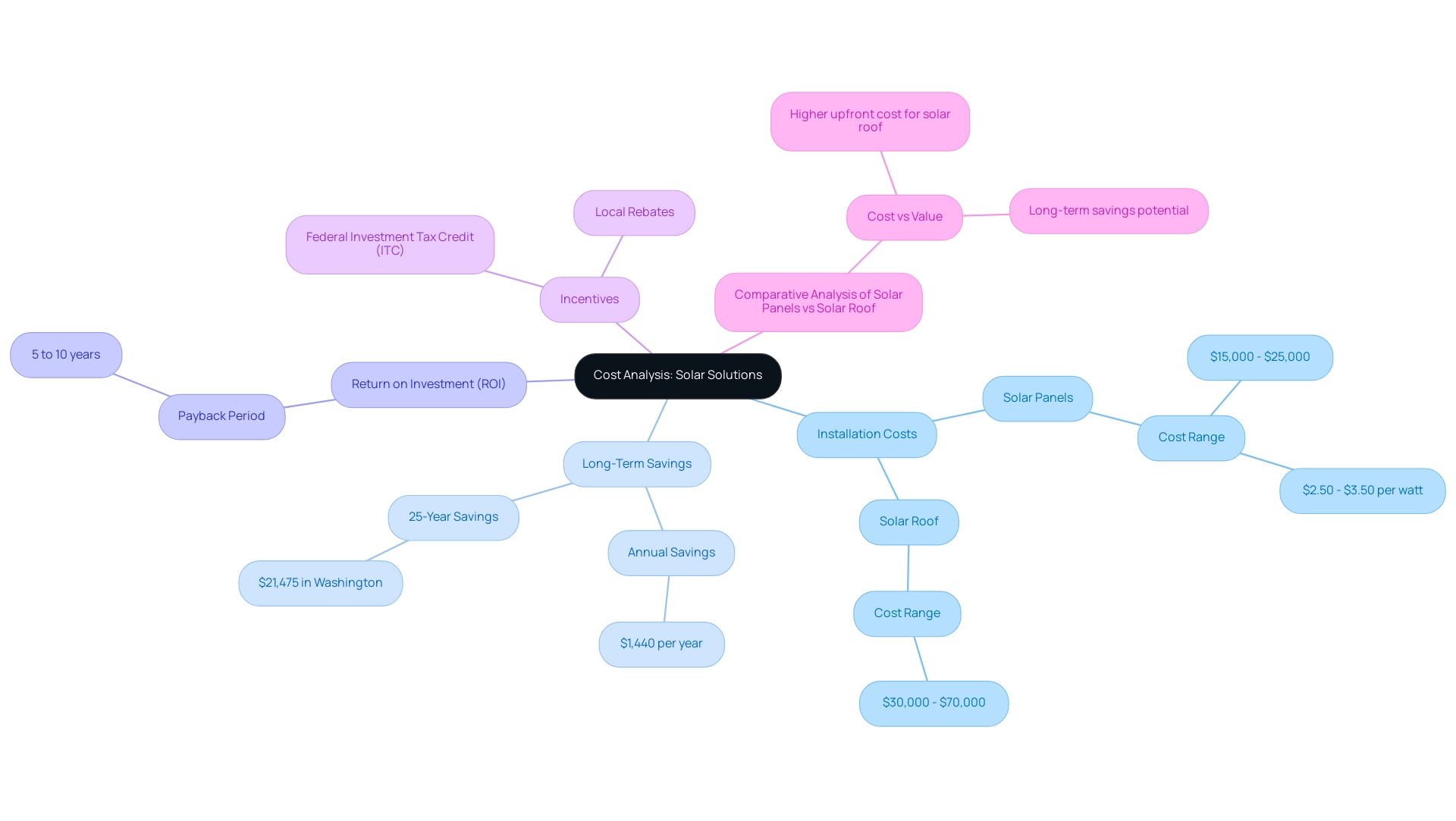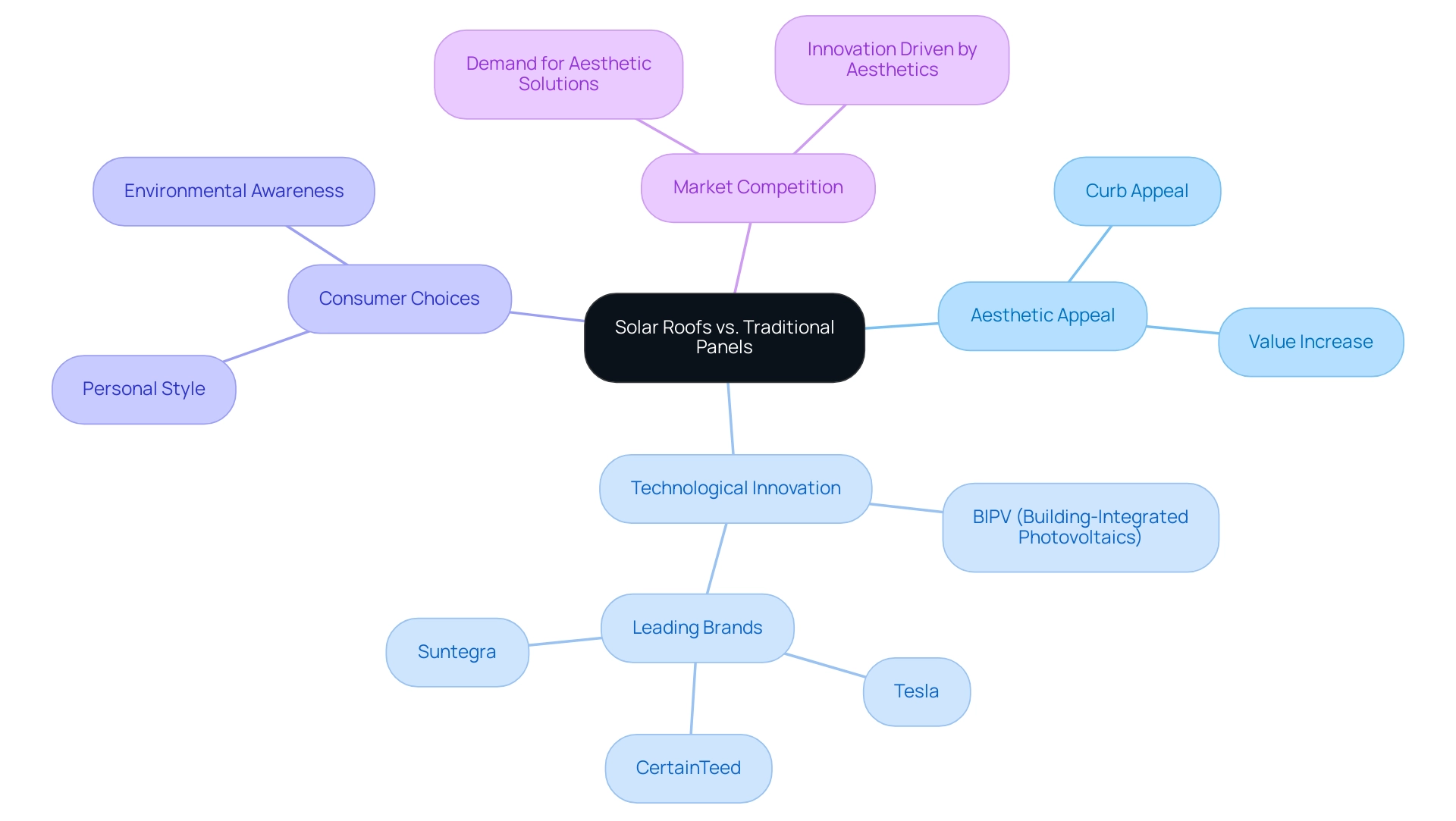Introduction
Choosing between solar panels and solar roofs can feel like a daunting task for homeowners eager to embrace renewable energy. Both options offer unique benefits, but understanding their key differences is essential for making an informed decision. From the familiar sight of solar panels that can be mounted on existing roofs to the sleek, integrated design of solar roofs, each choice has its own set of advantages and considerations.
As homeowners seek to reduce energy costs while promoting sustainability, exploring the financial, aesthetic, and environmental impacts of these technologies reveals important insights. This article delves into the nuances of solar solutions, helping homeowners navigate their options and align their energy goals with personal style and values.
Whether it’s maximizing efficiency or enhancing curb appeal, the journey to a greener home starts here.
Understanding the Key Differences Between Solar Panels and Solar Roofs
Solar panels are a familiar sight on many rooftops, typically mounted on existing structures and harnessing photovoltaic cells to transform sunlight into usable electricity. They pride themselves on a flexible installation method, suitable for different types of structures, and have become a preferred option for individuals seeking to adopt renewable power. In fact, the potential utility bill savings from photovoltaic energy can amount to approximately $1,058 over the first year, equating to about $128 annually per kW of installed capacity.
Conversely, energy-generating coverings embody a more innovative method by incorporating photovoltaic cells directly into building materials. This not only maintains the traditional appearance of a structure but also provides an added layer of protection for your home, while simultaneously promoting sustainability and reducing reliance on fossil fuels. However, it is important to recognize that solar tiles have a higher failure rate than energy structures due to their more interconnected components, which is a crucial consideration for homeowners.
The seamless design of photovoltaic roofs can be particularly appealing for those who prioritize aesthetics alongside functionality, despite the installation cost of $2.62 per watt after the tax credit. By comprehending these essential distinctions, homeowners can more effectively evaluate the options of solar panels vs solar roof to determine which choice aligns better with their power objectives and personal style. Furthermore, as part of a larger initiative towards sustainable living, investing in renewable power not only enhances autonomy but also aids in job creation and a healthier environment.
Residential net metered power installations can significantly enhance a state’s economic output and positively impact public health, creating a ripple effect of benefits. Additionally, many homeowners experience great fulfillment from participating in the clean power initiative, effortlessly aligning their lifestyles with environmentally friendly practices. With recent advancements in photovoltaic technology and supportive government initiatives, this decision is more exciting than ever, opening up opportunities for both savings and a greener future.
Cost Analysis: Installation and Long-Term Savings of Solar Solutions
When considering energy options in Long Beach, installation costs for solar panels vs solar roof generally range between $15,000 and $25,000, largely influenced by the system size and local incentives available to renters. Homeowners can often enjoy substantial savings on their electricity bills, typically seeing a return on investment (ROI) within 5 to 10 years. For instance, a 10-kilowatt energy system can save a household about $1,440 annually, significantly offsetting those initial investment costs.
In contrast, when comparing solar panels vs solar roof, photovoltaic roofs tend to come with a higher upfront cost, ranging from $30,000 to $70,000. However, investing in solar panels vs solar roof can lead to substantial long-term savings by reducing utility costs and enhancing your home’s value. Over a 25-year span, homeowners in Washington may save an average of $21,475, highlighting the substantial financial advantages of renewable power.
It’s crucial for renters and homeowners alike to grasp these financial dynamics, particularly in the context of solar panels vs solar roof, as they play a vital role in deciding the best option for their budget and energy needs. Additionally, various government programs and incentives, such as the Federal Investment Tax Credit (ITC) and local rebates, can further reduce the costs associated with renewable energy installations for renters. According to Angi, we pair this data with research from reputable sources, including the U.S. Bureau of Labor Statistics, academic journals, market studies, and interviews with industry experts—to ensure our prices reflect real-world projects.
Furthermore, the installation expense for photovoltaic systems usually varies from $2.50 to $3.50 per watt, affected by factors including materials, labor, and local climate. Exploring other energy solutions, such as Tesla home chargers and battery storage options, can also provide additional benefits and flexibility for eco-conscious homeowners. Understanding these aspects will empower you to make an informed choice that aligns with your financial goals and eco-conscious values.
Aesthetic Appeal: How Solar Roofs Compare to Traditional Panels
While solar panels vs solar roof options are undeniably effective in harnessing sunlight, their appearance can often disrupt the visual harmony of a home’s design. In contrast, energy-efficient surfaces are designed to blend harmoniously with your current roofing components, offering a stylish, contemporary appearance that appeals to numerous environmentally aware homeowners. This considerate design not only improves the overall curb appeal but also increases the home’s value, making the comparison of solar panels vs solar roof installations a compelling choice for those who prioritize beauty alongside sustainability.
As Mariëlle E. H. Creusen noted, > Product design has been recognized as an opportunity for differential advantage in the marketplace <. This sentiment rings true as homeowners increasingly seek solutions that reflect their personal style and values. Moreover, comprehensive insights into renewable solutions—such as Tesla home chargers, understanding panel functionality, exploring government programs, and considering cleaning services—highlight the multifaceted benefits of adopting these technologies.
Research supported by the U.S. Department of Energy and the National Science Foundation underscores the importance of innovation in photovoltaic technology, highlighting the significance of consumer choices in the debate of solar panels vs solar roof. Additionally, the economic and environmental benefits of sunlight heating systems, including both active and passive solutions, emphasize the integration of energy efficiency and sustainability. With leading brands like Tesla, CertainTeed, and Suntegra innovating in this space, the competition is no longer just about efficiency; it’s about creating products that complement specific architectural profiles and color schemes.
The case study on market competition in residential BIPV illustrates this point, showcasing how the demand for aesthetically pleasing energy solutions drives innovation and competition in the industry. Therefore, for eco-conscious homeowners, considering the aesthetic benefits of solar panels vs solar roof, as well as the practical aspects of energy system functionality, cleaning services, and battery options, can lead to a more harmonious and attractive living environment, reinforcing the value of integrating beauty with sustainability.
Efficiency and Energy Production: Which Option Delivers More Power?
When it comes to harnessing the sun’s energy, traditional solar devices generally shine brighter in terms of efficiency. Most solar modules today convert sunlight to electricity with rates ranging from 15% to an impressive 22%. For instance, Panasonic’s EverVolt HK Black Series boasts an efficiency of 22.2%, showcasing the potential for high-performance options.
However, it’s important to note that the panel surface can form a layer of boron oxide that reduces efficiency by 1 – 3% in the first 1,000 hours. Furthermore, brands like SunPower’s M series lead the pack at 22.8% efficiency, closely followed by QCELLS, REC Group, Maxeon, and Panasonic. While photovoltaic installations are a creative solution that integrates smoothly with your home’s design, they generally experience efficiency rates ranging from 10% to 15%.
Fortunately, progress in photovoltaic technology is consistently enhancing the power production of these structures, rendering them a more appealing choice as time goes on. As you assess your alternatives, think about how your power usage requirements correspond with available roof space in the context of solar panels vs solar roof, as this will assist you in choosing the appropriate photovoltaic solution. Moreover, combining your energy collection devices with optimal battery selections, like the Tesla Powerwall, can greatly improve energy storage, ensuring that you capture and utilize every ray of sunlight effectively.
It’s also advantageous to investigate government initiatives that may offer incentives for photovoltaic installation and battery storage. Routine upkeep and creative cleaning methods, like utilizing specialized cleaning kits or employing expert services, are crucial for enhancing efficiency and durability. This comprehensive approach enables you to enjoy the advantages of renewable resources while remaining dedicated to your eco-conscious values.
Environmental Impact: Assessing the Sustainability of Solar Technologies
Photovoltaic systems and rooftops are leaders in sustainability, contributing significantly to producing clean power and decreasing our reliance on fossil fuels. As the surge of solar-powered EV charging stations in Los Angeles illustrates, these innovations are making a significant impact in urban areas. With a proven track record, photovoltaic systems have consistently reduced greenhouse gas emissions, making them a wise option for environmentally aware homeowners.
For example, the power payback duration for multi-crystalline photovoltaic panels is currently assessed to be between 1 to 2 years, underscoring their effectiveness and sustainability. Homeowners can also gain considerable savings on their utility expenses, further emphasizing the financial benefits of renewable technology. Meanwhile, when considering solar panels vs solar roof, photovoltaic roofs offer a distinctive benefit by effortlessly merging power generation with the substitution of conventional roofing materials, rendering them an appealing choice for optimizing sunlight collection in San Diego.
It’s important, however, to acknowledge that the manufacturing processes for both technologies do carry some environmental impact. As Lisa pointed out, ‘Though the renewable energy and cleantech industries are rapidly expanding, women are still underrepresented, holding only 28% of renewable energy jobs in 2016,’ which sheds light on the social dynamics within this growing sector. Homeowners should weigh these factors carefully.
By selecting photovoltaic options, you’re not merely enhancing your residence; you’re actively aiding the shift toward renewable resources, helping to create a brighter, more sustainable future. Furthermore, the case study titled ‘Solar Adoption is about Pollution, Health, and Safety’ demonstrates how the embrace of renewable sources is connected to enhanced public health and environmental safety, reinforcing the notion that investing in this alternative is beneficial for both your home and the planet. At Powercore Electric, we are dedicated to providing premier residential solar panel installation services across Northern California, supporting your journey toward energy independence and a greener community.
Conclusion
Choosing between solar panels and solar roofs ultimately hinges on personal preferences and priorities. Both options present unique benefits that cater to different homeowner needs, whether it be financial savings, aesthetic appeal, or environmental impact. Traditional solar panels offer a proven efficiency and a more budget-friendly installation process, while solar roofs provide a modern, integrated look that can enhance property value and curb appeal.
Financially, understanding the installation costs and potential savings is crucial. Solar panels generally have a lower upfront cost and a quicker return on investment, making them an attractive choice for many. Conversely, while solar roofs require a larger initial investment, they can lead to significant long-term savings and add value to your home.
From an aesthetic standpoint, solar roofs stand out by blending seamlessly with the home’s architecture, appealing to those who value design alongside functionality. On the other hand, solar panels remain a reliable and efficient choice for harnessing solar energy, despite their more visible presence.
Ultimately, the decision between solar panels and solar roofs should reflect individual energy goals, budget considerations, and personal style. By weighing the advantages of each option and considering factors such as efficiency, cost, and environmental benefits, homeowners can confidently choose a solar solution that aligns with their vision for a greener future. Embracing solar energy not only contributes to personal savings but also plays a vital role in fostering a sustainable environment for generations to come.
